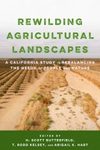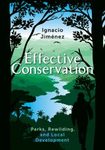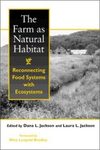![Green Infrastructure Green Infrastructure]()
Click to have a closer look
About this book
Customer reviews
Biography
Related titles
About this book
Imagine a land conservation and management approach that connects environmental, social, and economic health. Green Infrastructure: Linking Landscapes and Communities by Mark A. Benedict and Edward T. McMahon is an illustrative review of advances in smart land conservation and large scale thinking that provides a green solution to many of the problems associated with sprawling development.
The impacts of sprawl are felt everywhere: almost 2 million acres of farmland and half a million acres of private forestland in the United States are lost to development each year. But creating communities that protect open land and also provide homes and services for people is not impossible. Using the green infrastructure approach, communities can assess and relate the need to connect vital watershed, forest, field and recreational areas with land development for the health of the land and people. Communities can use the green infrastructure approach to prioritize conservation opportunities and plan development that meets those needs.
For the landscape designer, conservation-minded planner, and concerned citizen, this incisive work presents principles and practices that create conceptual and real links between nature and people. Providing both the historical framework for the importance of greenways and green space networks, and practical advice on how to design and implement them, Benedict and McMahon's book is a valuable resource for anyone who wants to understand innovative approaches to conservation-minded land use. From the individual parcel to the multi-state region, Green Infrastructure helps us look at the landscape in relation to the many uses it could serve, for nature and people, and determine which use achieves the most benefit for both.
Customer Reviews
Biography
Mark A. Benedict is the Senior Associate for Strategic Conservation and the Senior Advisor for the Conservation Leadership Network at the Conservation Fund. He resides in Martinsburg, West Virginia. Edward T. McMahon holds the Charles Fraser Chair on Sustainable Development at the Urban Land Institute in Washington, D.C. He lives in Takoma Park, Maryland; The Conservation Fund is located in Arlington, Virginia.






















![Biomas Brasileiros [Brazil's Biomes]](http://mediacdn.nhbs.com/jackets/jackets_resizer_medium/23/234100.jpg?height=150&width=104)













